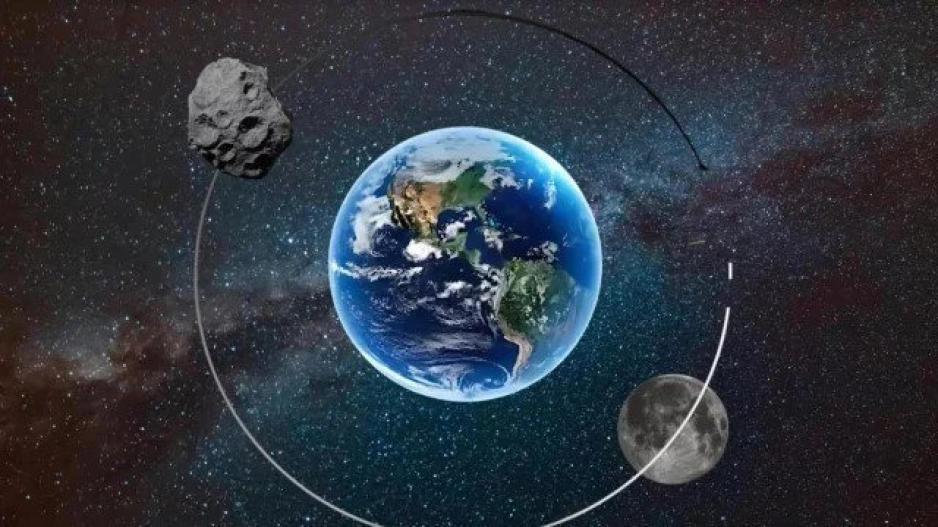Earth to Host a Temporary Second Moon in 2024
Though This Is Not the First Time Earth Has Had a Temporary Companion, Such Occurrences Remain Rare
For the second time in recent years, Earth will temporarily gain an extra moon. Beginning on September 29, a small asteroid named 2024 PT5 will enter Earth's gravitational pull, making it a "mini-moon" for nearly two months. This rare celestial event, identified by NASA-funded researchers, will see the asteroid orbit Earth in a unique horseshoe shape until it leaves our planet’s orbit on November 25.
The discovery of 2024 PT5 was made in August by the Asteroid Terrestrial-impact Last Alert System (ATLAS), an asteroid monitoring project. The asteroid was first spotted using an instrument located in Sutherland, South Africa. A team of scientists from Universidad Complutense de Madrid then tracked its orbit over a 21-day period, calculating its trajectory and confirming that it would soon become bound to Earth’s gravitational field. Their findings, published in Research Notes of the American Astronomical Society, revealed that the asteroid comes from the Arjuna asteroid belt, a collection of space rocks that follow an orbit close to Earth’s own path around the Sun.
Though this is not the first time Earth has had a temporary companion, such occurrences remain rare. Objects like 2024 PT5, known as near-Earth objects (NEOs), occasionally get captured by Earth's gravity. Some of these objects complete one or more revolutions around our planet, becoming mini-moons before continuing their journey around the Sun.
"2024 PT5 will be one of the larger mini-moons Earth has seen, and it will make its closest approach to our planet on January 9, 2025," explained Carlos de la Fuente Marcos, a lead scientist on the study. Although the asteroid will remain near Earth for a short time after exiting orbit, it will eventually leave Earth's neighborhood, only to return again in 2055.
Unlike the moon, which has been Earth's steady companion for around 4 billion years, mini-moons like 2024 PT5 are temporary. They occur when an object comes close enough to Earth at a slow speed—around 2,200 miles per hour (3,540 kilometers per hour). This allows Earth’s gravitational pull to overpower the object’s energy, pulling it into orbit. However, these events last only for a limited time, as the Sun’s gravitational influence eventually pushes the mini-moon back into its original orbit around the star.
Despite the excitement of having a second moon, 2024 PT5 won’t be visible to most skywatchers. "Unfortunately, it’s too small and faint to be seen with the naked eye or even with standard amateur telescopes," said Marcos. "Only professional astronomers with powerful equipment will be able to observe this temporary visitor." Instruments with a diameter of at least 30 inches, coupled with advanced detection technology, will be necessary to track the asteroid during its brief stay.
The study of mini-moons provides scientists with valuable insights into the dynamics of near-Earth objects and the potential for future asteroid captures. These temporary celestial companions help astronomers better understand how asteroids interact with Earth’s gravitational pull, offering clues about the behavior of larger asteroids that might come our way.
2024 PT5 joins a select group of mini-moons that have orbited Earth in recent decades. In 2020, a similar asteroid, 2020 CD3, was captured by Earth’s gravity and remained in orbit for several years before returning to its heliocentric path. As research into these events continues, scientists remain intrigued by the unique characteristics of each mini-moon episode, whether short or long-lasting.
While the asteroid's brief visit won't create any dramatic visual spectacle, it remains an exciting opportunity for astronomers to observe and study another example of Earth's fleeting cosmic neighbors.






